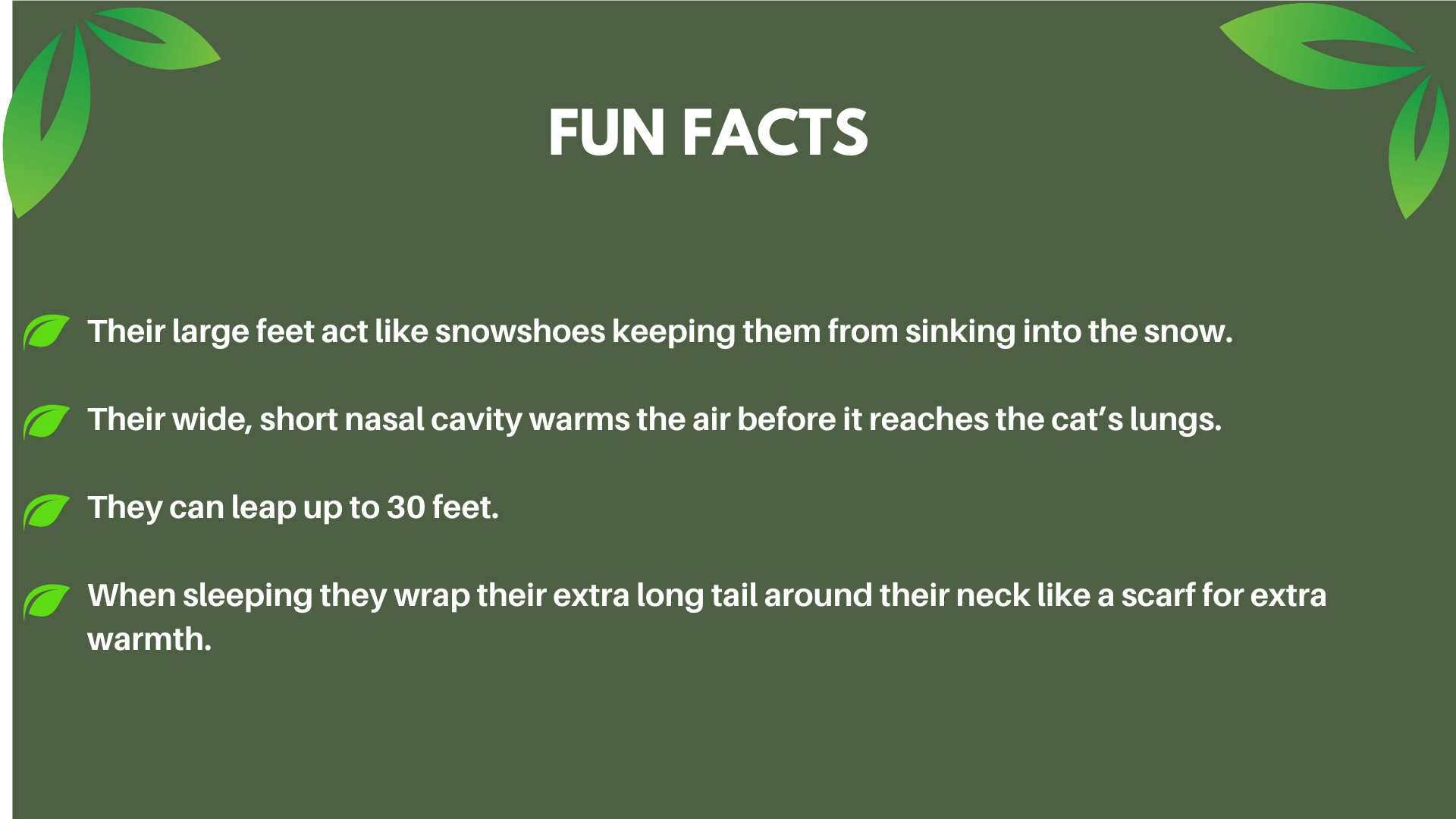Snow Leopard
Did you know...
Snow leopards have a home range of up to 600+ miles? They are very elusive and rarely seen. They also have great camouflage. This is why they are referred to as the "ghosts of the mountain." Can you find the snow leopard in this picture?


Snow leopards spend most of their time in high mountainous elevations. They constantly move around their home ranges to hunt and leave markings that prevent other cats from moving in. These cats often travel along ridge lines and cliff bases, and choose resting sites with good views over the surrounding terrain.
The mountains are home to their prey as well. Their main diet consists of blue sheep, Argali wild sheep, ibex, marmots, pikas and hares. Snow leopards are important because they play a key role as a top predator keeping the prey animal populations in check. They are also an important indicator of the environmental health of their high-altitude habitat and the impacts of climate change on their mountain environments. If snow leopards thrive, so will countless other species along with some of the largest freshwater reservoirs on the planet.
.

_____________________________________________________________________________________________________________________________________________________
Can I adopt a snow leopard?

Yes, you can symbolically adopt a snow leopard and help the Zoo with the care and feeding of our pair. Just click here to learn more.
__________________________________________________________________________________
How snow leopards are being helped in the wild
The snow leopard’s habitat extends through twelve countries: Afghanistan, Bhutan, China, India, Kazakhstan, Kyrgyzstan, Mongolia, Nepal, Pakistan, Russia, Tajikistan, and Uzbekistan. China is one of the most influential countries for its conservation efforts, as it contains as much as 60% of all snow leopard habitat areas.
It is estimated that there may only be between 4,000 and 6,000 snow leopards left in the wild. There are many organizations working together to help save these elusive cats. The Snow Leopard Trust is one such organization that has helped in many different ways. They have worked with local communities and political allies to get prime snow leopard habitat protected from the threat of mining. In 2010, their efforts achieved a huge success with one area becoming federally protected by making it a national Nature Reserve.
How you can help snow leopards
- Donate or volunteer at organizations like World Wildlife Fund and Snow Leopard Trust, which work with local communities to protect snow leopard habitat and ban the hunting and poaching of them.
- Volunteer at Chattanooga Zoo. As a volunteer you can talk with our Zoo guests about the Zoos snow leopard pair, Callie and Tashi, and share their information in hopes to foster an awareness and appreciation to help conserve snow leopards in the wild.
- Don't buy any products made from animal fur, skin, bones or organs. By purchasing these items you are helping to create a demand for these products.
. - Chattanooga Zoo participates in the Association of Zoos and Aquariums' Species Survival Plan (SSP) for snow leopards. The mission of an SSP program is to cooperatively manage threatened or endangered species populations within managed-care facilities. By supporting Chattanooga Zoo, you are our ally in saving and protecting snow leopards in the wild.
.








